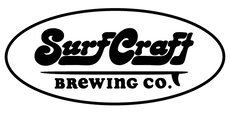A tribute to the Coliseum of Australian surfing, what is arguably Australia’s most famous surfing beach. Bells is the perfect arena for competition. Not only does it capitalise on the best swell that the Southern Ocean has to offer (more on that later) but the headlands that surround the beach form a perfect natural amphitheatre. If that wasn’t enough, prior to each heat and final, the surfers make their way down the long wooden staircase to the beach that snakes through the scrub and the crowd before they arrive on the sand, ready to do battle. (sounds an awful lot like Gladiator, right?) It’s the ideal setup for thousands to come and watch the best in the world go head-to-head, which they do, every year. The event at Bells Beach is the longest consecutive running surf event on the competitive circuit and in Australia.
What makes Bells Beach so legendary is that the ocean floor provides a perfect contour to harness the big Southern Ocean swells that roll through, turning into long rides with a wavering lip that’s begging to be hit with turn after turn. When the conditions are just right, the wave at Bells can start all the way out at Rincon and break right through Outside Bells into The Bowl. While the wave may look perfect from the headland, it is a technical wave that requires power and practice to make sure those turns really link up.
Bells waves are walls that rarely barrel like other key stops on the tour. This means that for the surfers to score big points they need to showcase all of their rail-surfing talent, wave selection alone won’t be enough to get you through. There’s no easy 10 tubes rolling through to save anyone lagging in their heat. But don’t think that wave selection isn’t still key. Bells is as notorious for the lulls between sets as it is for waves. You don’t want to paddle for the first one only to be caught on the inside by the rest, it’s not a fun way to spend your day.

Long before surfing had made it to the now-iconic destination, the land surrounding Bells Beach was home to the Gulidjan Aboriginal people. In the 1840s, a western family by the name of Bell settled in the area and you can figure it out from there. But it wasn’t until 1957 that a handful of members of the Torquay Surf Lifesaving Club followed the dirt track out of town, trekked through the bush and first rode waves at Bells Beach.
In 1960, surfing legend Joe Sweeney upgraded the old dirt track and extended it down to Bells Beach. The entire project cost 32 pounds and Sweeney charged his mates a pound each for use of the track. The following year the first surfing competition was held, the Bells Beach Easter Rally which became an annual event. By 1973 this event was included on the World Competitive Tour (WCT) and has since been known as the Rip Curl Pro Bells Beach. The competition has famously been held over the Easter long weekend to honour tradition.
Story Credit - Thomas Elliott: redbull.com
Picture Credit - John Witzig
